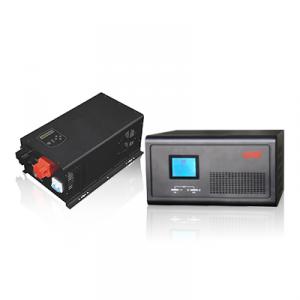Inverter Solar Inverter
Inverter Solar Inverter Related Searches
Best Solar Inverter For Home Best Inverter For Solar Micro Inverter For Solar Panel Solar Inverter Cost For Home Inverter For Home Solar Cover For Solar Inverter Solar Battery For Inverter Shade For Solar Inverter Wifi Dongle For Solar Inverter Wifi For Solar InverterHot Searches
Type Of Inverter For Solar Types Of Inverter For Solar Used Solar Inverter For Sale Inverter Size For Solar System Solar Edge Inverter For Sale 5kw Solar Inverter For Sale Solar Inverter For Sale Solar Inverter For Battery Solar Inverter For Split Ac Solar Inverter For Laptop Solar Inverter For Fridge Solar With Inverter Price Solar Inverter With 2 Battery Solar Inverter Price In China Best Solar Inverter In China Solar Inverter Price In Dubai Solar Inverter Price In Uae Solar Inverter Price In Kenya Solar Inverter Price In Kerala Type Of Inverter For SolarInverter Solar Inverter Supplier & Manufacturer from China
Okorder.com is a professional Inverter Solar Inverter supplier & manufacturer, offers integrated one-stop services including real-time quoting and online cargo tracking. We are funded by CNBM Group, a Fortune 500 enterprise and the largest Inverter Solar Inverter firm in China.Hot Products
FAQ
- A solar inverter handles voltage regulation during sudden load changes by continuously monitoring the voltage and current outputs from the solar panels. When there is a sudden increase or decrease in the load, the inverter adjusts its power output accordingly to maintain a stable and consistent voltage level. This is achieved through a combination of control algorithms and power electronics within the inverter, ensuring that the voltage remains within an acceptable range to meet the demands of the load.
- Yes, a solar inverter can be used for commercial-scale solar installations. In fact, commercial-scale solar installations often require multiple solar inverters to convert the DC power generated by the solar panels into usable AC power for commercial use. These inverters are designed to handle the higher power output and voltage levels typically found in larger solar installations.
- A solar inverter typically handles variations in battery charge levels by constantly monitoring the charge level of the battery. It adjusts the energy flow from the solar panels to the battery based on its charge level. When the battery charge is low, the inverter increases the energy flow from the solar panels to charge the battery. Conversely, when the battery charge is high, the inverter reduces the energy flow to prevent overcharging. This dynamic control ensures efficient use of the available solar energy and optimal charging of the battery.
- A solar inverter handles grid frequency deviations by constantly monitoring the grid frequency. When the grid frequency deviates from the standard range, the inverter adjusts its output frequency accordingly to match the grid frequency. This allows the inverter to maintain synchronization with the grid and continue injecting power efficiently, ensuring stability and reliability of the solar power system.
- Yes, solar inverters are typically weather-resistant. They are designed to withstand different weather conditions such as rain, snow, and extreme temperatures. However, it is still important to consider proper installation and maintenance to ensure the longevity and performance of the inverter in varying weather conditions.
- The efficiency of a solar inverter plays a critical role in determining the overall system performance. A higher efficiency inverter converts a greater percentage of the incoming solar energy into usable electricity, resulting in increased energy production. This ultimately leads to higher system output and improved performance. Additionally, a more efficient inverter reduces energy losses and improves the overall system's reliability and longevity. Lower efficiency inverters, on the other hand, can result in energy wastage and reduced system performance. Therefore, selecting a highly efficient solar inverter is essential for maximizing the overall performance and energy output of a solar power system.
- Yes, a solar inverter can be used with different types of power factor correction devices. The solar inverter is responsible for converting the DC power generated by the solar panels into AC power that can be used in homes and businesses. Power factor correction devices, on the other hand, are used to improve the power factor of the electrical system by reducing reactive power. The solar inverter can work in conjunction with various types of power factor correction devices, such as capacitors or active power factor correction units, to optimize the efficiency and performance of the electrical system.
- The role of isolation in a solar inverter is to provide safety and protection by electrically separating the DC input side (solar panels) from the AC output side (grid or load) to prevent any potential hazards such as electrical shocks, short circuits, or ground faults. It also helps in reducing noise interference and improving the overall performance and efficiency of the inverter.















































